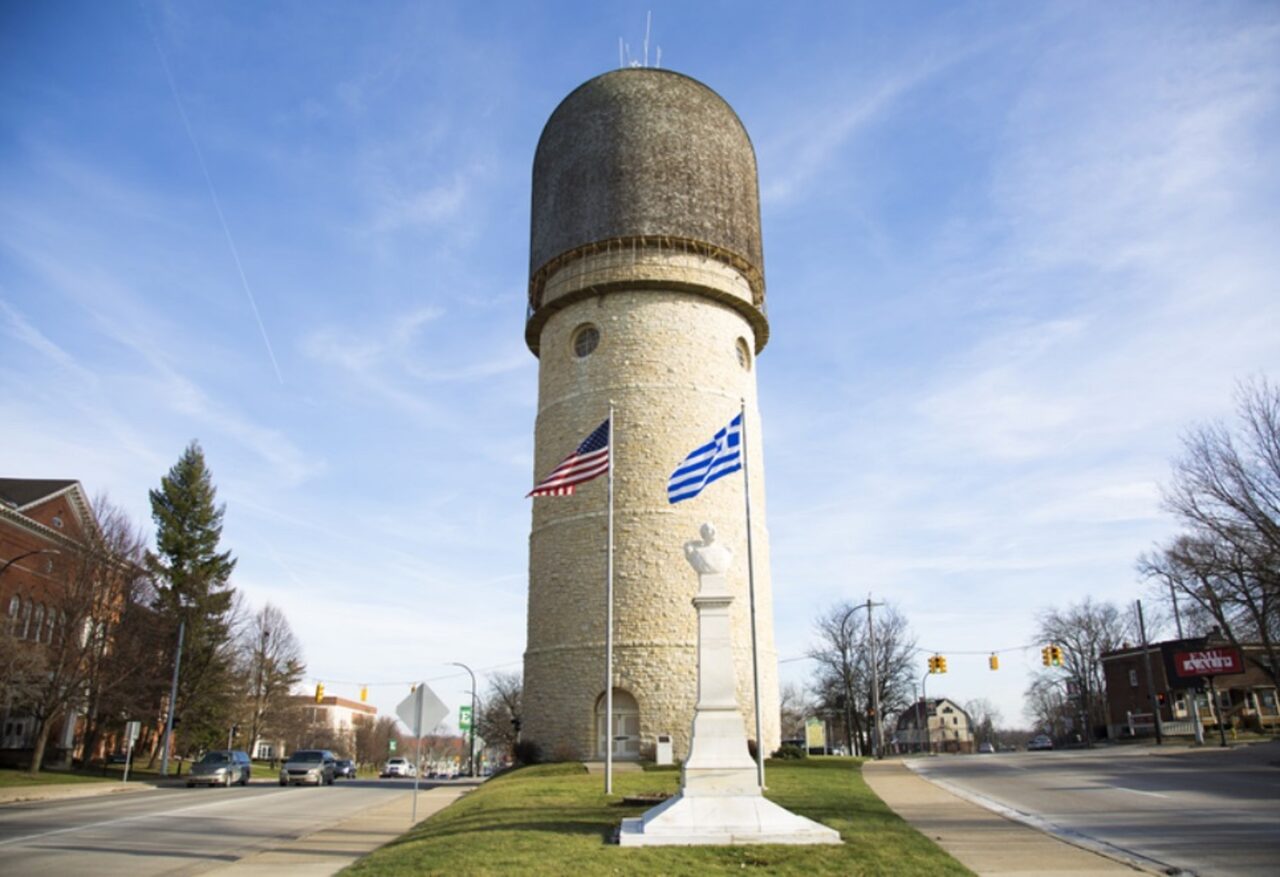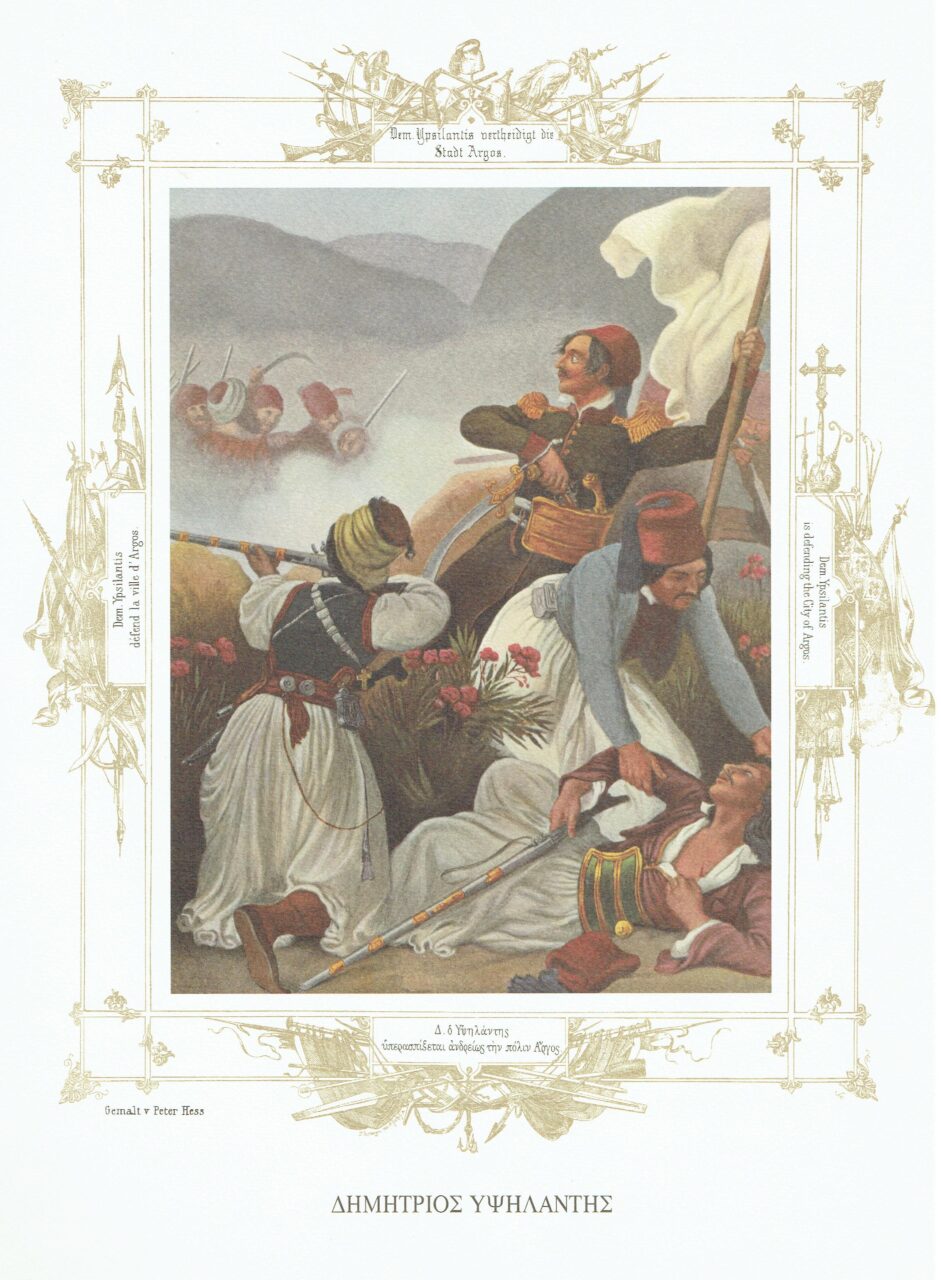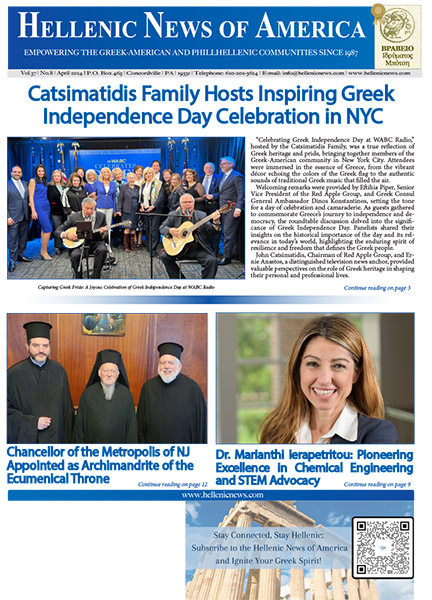The Greek Orthodox Church, the merchant class that created the revolutionary organization of the Filiki Eteria, Alexander, and Demetrios Ypsilantis brothers inspired the successful outbreak of Greek Independence in 1821. Fortunes were lost. Genocide of the Christian population by invading the Ottomans was experienced. The outcome: Independence.
The Orthodox Church became the only institution to function in Greek territory under Ottoman rule. They perpetuated the memory of the Christian Byzantine Empire. Education from elementary and higher education created a sense of identity, taking on a secular and political role.1 Their leaders played roles in the 1821 Revolution.

It is not politically correct to state this fact: Only through the Greek Orthodox Church could young men gain an education and elevate themselves through the priesthood during centuries of Ottoman slavery. The martyred statue of Patriarch Gregory V, who was from Dimitsana, dominates the central square. We visited from the outside his family home and Germanos III of Old Patras. The Orthodox Metropolitan of Patras Germanos III (1771–1826), was born Georgios Gotzias. He played an important role in the Greek Revolution of 1821, having diplomatic and political activity.
Palion Patron Germanos was born in Dimitsana, northwestern Arcadia, Peloponnese. Before his consecration as Metropolitan of Patras by Patriarch Gregory V, he had served as a priest and Protosyngellus (Chancellor) in Smyrna. Bishop Germanos played an important role in the Filiki Eteria. Dimitsana is linked with the Greeks of Smyrna, Constantinople, Cyprus, the secret Greek society of the Filiki Eteria, and Russia. Catherine the Great’s “Greek Plan” in the 1770s that resulted in the Battle of Chesma (Tseme) off the coast of Chios, immortalized by the sea landscapes of Ivan Aivazovsky, was backed by the Greeks of Dimitsana and the Peloponnese.2

The phrase I have been hearing constantly in 2021 America is “Follow the Money” and learn the truth. On the 200th Anniversary of Greece’s Independence, this explains the forces forging independence from the crippling slavery of the Ottoman Turkish Empire.
The Alexander S. Onassis Public Benefit Foundation (USA) describes the rise of the Greek business community in “From Byzantium to Modern Greece: Hellenic Art in Adversity, 1453-1830. The 18th century was critical in the Greek business community. A different perception of what really was going on and alternatives. Large Greek cities were transformed into economic capitals, such as Smyrna and Thessaloniki. The trading center developed in Ioannina, Arta, Patras, Chios, and Herakleion. Greek merchants after 1774 controlled a large part of the domestic and foreign trade of the high-handedness of the authorities, system of privileges Ottoman Empire with Western Europe and Greek communities of Vienna, Trieste, Livorno, and Odessa.
The merchants’ experience with the West and the reality of Greek life made them realize the weakness of the economy of their Ottoman Masters. The high-handedness of the authorities, a system of privileges, and a climate of uncertainty impeded the investment of capital. Manufacturers who were beyond the cottage industry stage were prevented from developing into true industrial units.

The Consul of France in Thessaloniki, Felix de Deaujour noted “The despotism makes the fortunes fleeting, because…no one takes care to gain what he may lose.” The Greek merchants realized that the “occupation” hindered economic development. They consolidated Greek identity, not supporting the ESTABLISHMENT. This contributed to a revolutionary nation ideology.3
The Greek merchant class inspired the creation of the “Filiki Eteria”, (Friendly Brotherhood). It was a Greek revolutionary secret society founded by merchants in Odessa in 1814 to overthrow Ottoman rule in southeastern Europe and to establish an independent Greek state.
The society’s claim of Russian support and the romance of its commitment (each member swore “irreconcilable hatred against the tyrants of my country”) brought thousands into its ranks. Though some recruits believed that the society was secretly directed by the Russian emperor’s foreign secretary—the Greek Ioánnis, Count Kapodístrias—it was Alexander Ypsilantis, an officer in the Russian Army, who accepted the leadership in 1820.”4
Alexander and Demetrios Ypsilantis were descendants of the Comnenos dynasty of emperors of Byzantium, dating from 1200. “The Ypsilantis, were from palace families who followed Alexios Komnenos Doukas, when Constantinople fell to the Latins (1204), to establish the empire of Trabzon, Pontus. The Ypsilantis family had expertise in diplomacy. They were interpreters, ministers, rulers for Wallachia and Moldavia (Romania). Journalist Spiros Melas of the newspaper “Eleftheros Vimas” in 1930 explained, “But in all their dramatic life, which passed between two flashes of the sultan’s honors and the executioner’s sword, they never lost sight of Greece: They served it with their minds and their blood.”5

Alexander Ypsilantis planned uprisings in the Danubian principalities as well as in the Peloponnese and the Greek islands, Ypsilantis launched the revolt in the spring of 1821. The Romanian peasants did not join his forces, however; the Russian emperor Alexander I repudiated him, and the Turks quickly defeated him. The venture resulted primarily in bringing an end to the rule of the Greek Phanariotes in Moldavia and Walachia.6 Ypsilantis uprising was crushed on June 7, 1821. But it took hold on the entire Greek mainland.7 Alexandros Ypsilantis sacrifice inspired Greeks to fight and gain independence.
Demetrios Ypsilantis’, Alexander’s brother, heroism inspired Westerners in Michigan. In 1825, Ypsilanti, a town in Michigan, “was named for the Greek patriot General Demetrius Ypsilanti, a heroic figure in the battle that the Greeks were fighting against Turkish tyranny – a struggle for freedom that many Americans likened to our own. With three hundred men, Ypsilanti held the Citadel of Argos for three days against an army of thirty thousand; after his provisions were exhausted, he and his entire command made a daring escape behind enemy lines without losing a single man.”8 A bust of Demetrios Ypsilanti stands between American and Greek flags at the base of the landmark Ypsilanti Water Tower.9 Church, business interests, Filiki Eteria, Ypsilanti revolt, and self-sacrifice of the ordinary Greek set the stage for the Independence of Greece. European governments changed their neutrality seeing the success of the Greek Independence fighters, which defied the governments.
References:
- Alexander S. Onassis Public Benefit Foundation (USA), “From Byzantium to Modern Greece: Hellenic Art in Adversity, 1453-1830”. New York City, 2005, p22
2. https://greekamericanexperience.wordpress.com/2018/07/10/on-the-
3. Alexander S. Onassis Public Benefit Foundation (USA), p. 25.
4. https://www.britannica.com/topic/Philiki-Etaireia
6. https://www.britannica.com/topic/Philiki-Etaireia
7. Alexander S. Onassis Public Benefit Foundation (USA), p. 26.
8. https://cityofypsilanti.com/325/Ypsilanti-History
10. Peter Von Hess. 1821 Revolution of the Nation: 40 Lithographs, Delta, Athens, 1996.
11 https://www.ypsireal.com/blog/post/ypsilanti-water-tower/






